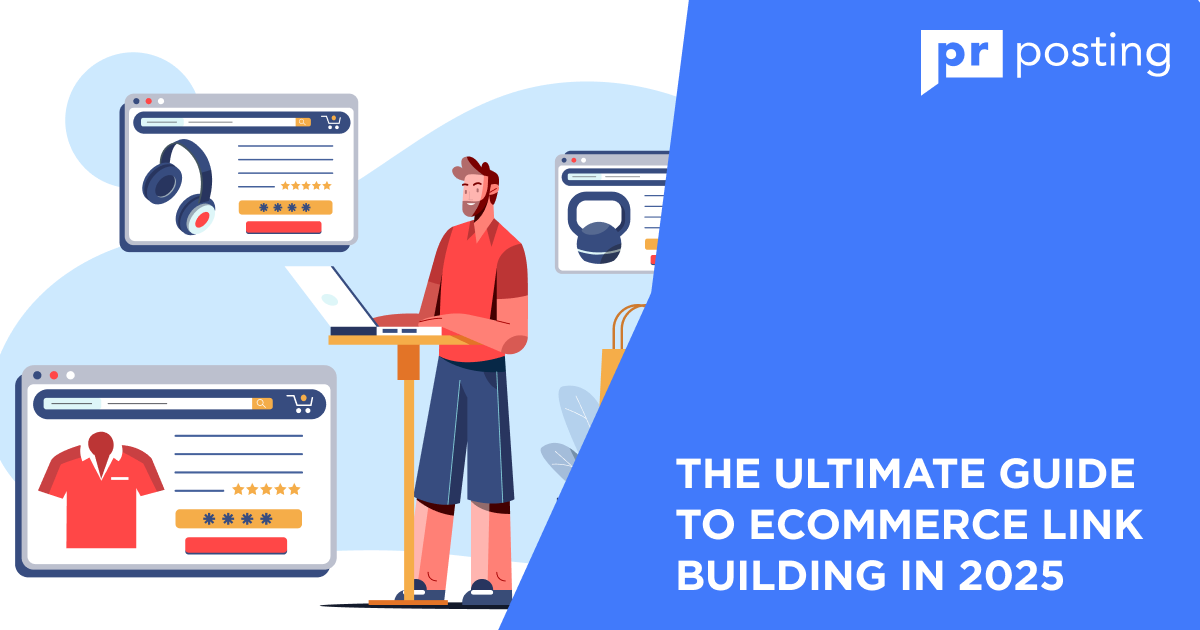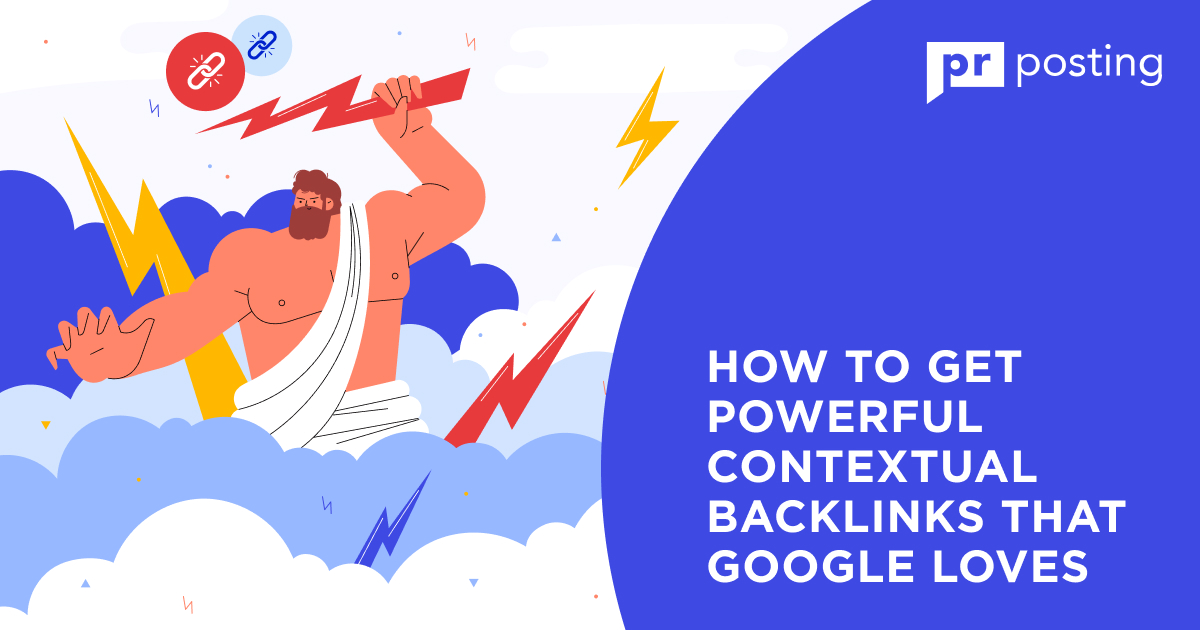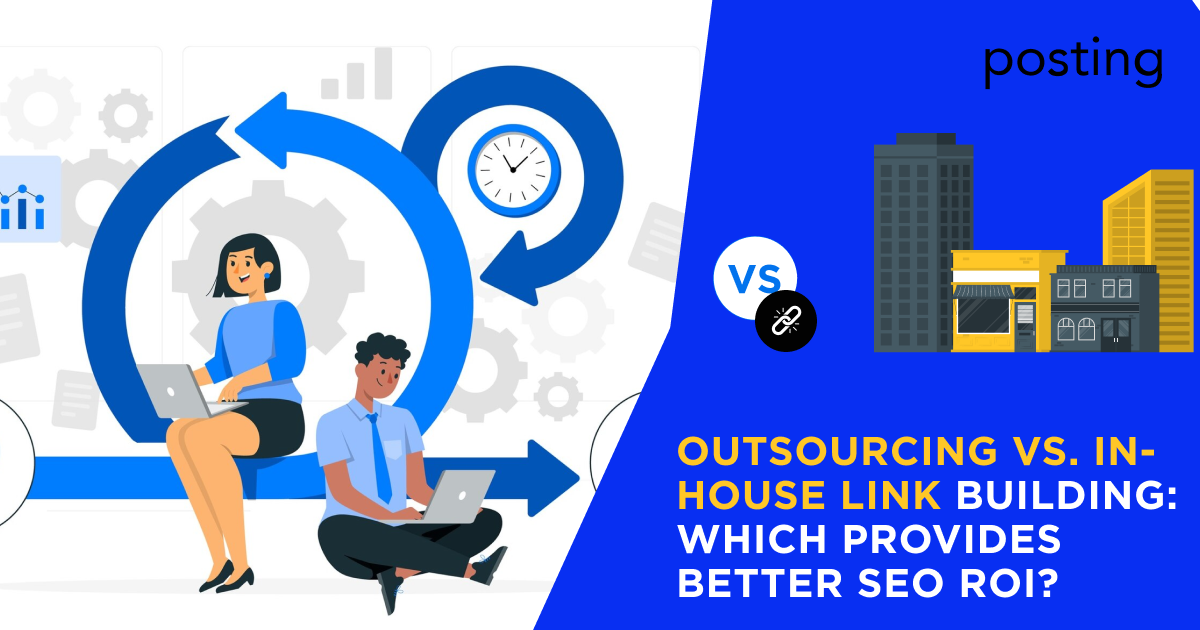The Ultimate Guide to Ecommerce Link Building in 2025

What Is Ecommerce Link Building?
Ecommerce link building means getting other sites to link to yours. These links must point to useful pages, not just homepages or promotions. The goal is to increase your site’s trust and visibility.
You need links from:
- Niche blogs and media;
- Review and guide articles;
- Tools and resource pages;
- Influencers’ blog posts.
These links help rankings and brand awareness.
How It Differs from Traditional Link Building
Most link methods target blogs, software tools, or service pages. Product pages don’t attract links easily since they lack useful content and change often.
Why Product Pages Are Difficult to Link to
- Product pages are commercial, not educational.
- They go out of stock or disappear.
- Blogs avoid linking to them.
- The value for the reader is often unclear.
Instead of promoting product pages directly, e-commerce brands need content assets. These support your store and give others a reason to link.
The Role of Affiliate Links and SEO Trade-Offs
Affiliate links bring traffic but often use the “nofollow” tag, which limits SEO value. Many blogs prefer affiliate links over natural ones. This hurts your ecommerce backlinks for SEO profile.
Still, a mix helps:
- Use affiliate programs for reach;
- Use content links for SEO;
- Don’t rely on one link source.
Balance traffic and SEO goals. Focus on link types that help both.
SEO Value of Ecommerce Backlinks
Impact on Organic Search and Shopping Listings
Links help you:
- Rank above your competitors;
- Show up in Google Shopping results;
- Drive more clicks to high-value pages;
- Improve visibility for long-tail product terms.
How Even a Few Links Can Improve Rankings
Use smart ecommerce link building strategies to gain links that stay valuable.
Why Link Building Matters for E-commerce Sites
Backlinks as a Ranking Signal
Search engines still rely on backlinks. They count as votes for your pages. High-quality links raise your authority. Without them, even great content gets buried.
Use advanced ecommerce link building tactics to stay competitive.
Examples include:
- Data-backed PR;
- Guest posts on expert blogs;
- Broken link building SEO for niche topics.
Focus on relevance and trust. One link from a strong domain can outweigh ten weak ones.
Driving Qualified Referral Traffic
Some backlinks bring more than rankings and attract real buyers.
Good examples:
- Gift guides during holiday seasons;
- Blog reviews for niche gear or fashion;
- Tutorials that include your product link
How to drive referral traffic:
- Look for blogs that already rank.
- Pitch a product that matches their topic.
- Suggest where your link fits.
You gain:
- Better traffic quality;
- Higher conversion rates;
- More long-term sales.
Boosting Brand Authority and Trust
Ecommerce link building techniques build brand trust. People trust brands they see mentioned often. A link from a known blog does more than boost SEO.
It shows that:
- Your brand is real;
- Your product solves a problem;
- Others recommend you.
Look for:
- Unlinked brand mentions you can claim;
- Listicles and resource pages;
- Review articles with traffic.
These links don’t fade with time and build long-term value.
Supporting Long-Term Organic Growth
SEO needs time. But links speed things up. Quality backlinks help Google find and trust your pages. They support every part of your growth plan.
Use these ecommerce link building ideas:
- Turn support questions into guides.
- Build a calculator or quiz.
- Write expert answers to trending problems.
These ideas fuel SEO growth over time. Build content once ― earn links for years.
Link Building Challenges for Ecommerce Websites
High Competition
Competing with Retail Giants
Big players hold most of the link equity. They dominate searches and referrals. Smaller stores can’t match their scale or brand pull.
Here’s why this matters:
- Retail giants appear first on product terms.
- They earn natural links through volume.
- Smaller brands must try harder for every mention.
To survive, small stores must use smart ecommerce link building tactics like:
- Content campaigns tied to niche needs;
- Outreach to micro-influencers;
- Unlinked brand mentions follow-up.
Without a plan, big names will drown out your store.
Difficulty Linking to “Money Pages”
Collection and Product Pages
People avoid linking to commercial intent pages. Most bloggers don’t link to product grids or checkout flows.
Why:
- They seem self-serving.
- They lack unique content.
- They shift too often.
How to build links anyway:
- Create helpful guides around collections.
- Add tools or calculators to product pages.
- Link indirectly through supporting content.
Build value first. Promote later.
Targeting Product URLs
Product pages can help SEO fast, but they carry risk.
Risks include:
- Google updates hitting thin pages;
- Traffic drops when links vanish;
- Wasted budget if stock changes.
Mitigate this with:
- Strong internal links to these pages;
- External links only to stable products;
- Split testing new ecommerce link building ideas.
If you target “money pages,” be ready to pivot.
Link to Commercial Sites
Many bloggers see store links as ads. They fear bias or penalties.
Why it happens:
- Commercial content seems promotional.
- Link guidelines scare editors.
- Stores don’t add value to posts.
What helps:
- Unique data or case studies;
- Reviews without pushy language;
- Collaboration, not cold pitches.
Try advanced ecommerce link building through interviews or roundups. These build goodwill before asking for a link.
Short-Term Sales Goals vs. Long-Term SEO Needs
Sales teams want fast results. SEO takes longer. That creates tension.
Problems:
- Paid ads drain the budget from SEO.
- Link building gets delayed.
- Content fades without upkeep.
What to do:
- Set shared goals for sales and SEO.
- Show how links support long-term traffic.
- Blend short-term gains with lasting assets.
Strong SEO plans win over time. Links pay off later.
Managing Large Catalogs and Internal Link Structure
Big stores have thousands of pages. That spreads authority thin.
Issues:
- Deep pages get no internal links.
- Orphaned content weakens rankings.
- Crawlers miss new items.
Fix this by:
- Mapping key product flows;
- Linking from top content to deep pages;
- Using breadcrumb and footer links.
Good ecommerce backlinks boost the SEO of your website. Structure matters more as stores grow.
Proven Ecommerce Link Building Strategies
Digital PR for Ecommerce
Reactive PR and Newsjacking
Jump on trending topics with quick takes. Offer a new angle.
Steps to apply:
- Follow journalists using tools like HARO or X.
- Track live topics using media alerts.
- Pitch with short, fact-driven statements.
Benefits:
- Quick wins;
- High-authority links;
- Press mentions that build trust
These ecommerce backlinks support SEO by adding strong domain signals.
Data-Driven Campaigns
Journalists need new data. Give it to them.
Try these ideas:
- Create charts from your store’s trends.
- Collect user survey insights.
- Offer insights as quotes from staff.
Outcomes:
- News outlets may link back.
- Data stays useful over time.
- Builds thought leadership.
This is one of the most repeatable ecommerce link building ideas.
Broken Link Building
How to Find Dead Links in Your Niche
Dead links waste SEO value. Reclaim them with better options.
Steps:
- Use tools like Ahrefs or Check My Links.
- Search by topic or product type.
- Make a list of 404 pages with backlinks.
Check them often ― markets shift weekly.
Offer Relevant Replacements for Better Success Rates
Outreach fails without good replacements. Provide better content.
Tips:
- Match the dead page topic closely.
- Add helpful images or lists.
- Show quick value in your email.
Unlinked Brand Mentions
Using Alerts and Monitoring Tools
Many sites name brands without linking. Track and claim them.
Steps:
- Set alerts for your brand and products.
- Look weekly for mentions with no links.
- Use a gentle outreach email.
Useful tools include:
- Google Alerts
- BrandMentions
- BuzzSumo
These let you fix missed chances for ecommerce backlinks.
Outreach Templates That Work
Your email makes or breaks the deal.
Essentials:
- Be brief;
- Offer value;
- Link to the right page.
This works best with unlinked brand mentions found within 7 days.
Value-Packed Guides
Talk to Customer Support and Sales Teams
Customers ask real questions daily. Use them to guide content.
Steps:
- Ask your support team for repeated queries.
- Build a topic list from complaints or doubts.
- Write guides that solve these exact problems.
These posts attract natural links from blogs and forums.
Target Informational Keywords
Not all keywords sell. Some teach. Target those for long-term links.
Create:
- Step-by-step guides;
- Printable charts;
- Short videos.
These assets earn links over time and feed advanced ecommerce link building efforts.
Interactive Tools and Calculators
Solve Real Customer Pain Points
Give users something they can’t find elsewhere.
Great tools:
- Size checkers;
- Delivery date estimators;
- Return window counters.
Add real use, and people will share it. Google also favors tools that match user tasks. Examples: Size Finders, Style Quizzes, Fit Calculators
Shoppers love quick answers.
These tools earn passive links from forums, bloggers, and even news outlets. They often pair well with successful social media campaigns, too.
The right ecommerce link building techniques will lift your search traffic and bring users that stay.
Original Research and Studies
Why Unique Data Attracts Natural Links
People link to new facts. No guesses. Not rewrites.
Here’s why:
- Data earns trust.
- It gives journalists something to cite.
- It feeds new blog content.
Ideas for original research:
- Customer habits;
- Product trends;
- Shopping patterns by season.
This method supports advanced ecommerce link building with lasting results.
How to Promote Research for Maximum Reach
Even good data fails without reach.
Promote it like this:
- Pitch to niche bloggers.
- Share in expert groups.
- Email past linkers on the topic.
Also:
- Turn data into charts or infographics.
- Post snippets on X or LinkedIn.
This spreads links without begging for them.
FAQ Sections on Product Pages
Target BOFU Keywords
People near checkout search with clear questions.
Examples:
- “Is this bag waterproof?”
- “Do these shoes run wide?”
- “How long is the delivery?”
These are bottom-of-funnel (BOFU) keywords. They convert and attract links. Add answers below the product details or use collapsible FAQ boxes.
Answering Real User Queries to Gain Links
Support teams know your customers best.
Steps:
- Ask support for common questions.
- Turn these into short, clear answers.
- Add them to key product pages.
Bonus: These answers often match voice search queries, too.
Influencer and Blogger Partnerships
Focus on Blog Collaborations, Not Just Social Media
Don’t chase likes. Seek backlinks.
Work with:
- Niche bloggers;
- Review sites;
- Shopping blogs.
Offer samples in return for honest reviews. These reviews often link back. This method feeds strong ecommerce link building tactics without overusing social media.
Affiliate Programs for Link Building
SEO Trade-Offs with Nofollow Links
Affiliate links use rel=nofollow. That means no direct SEO value.
But don’t ignore them. These links still help.
Here’s why:
- They bring traffic.
- Bloggers still mention your brand.
- Some still link with dofollow links elsewhere.
Used right, they support ecommerce link building techniques without spam.
Gaining Exposure and Referral Traffic
Well-run affiliate programs help smaller stores compete.
Tips:
- Offer high commissions.
- Pay on time.
- Provide image packs and descriptions.
Then, track who links where. Ask for extra dofollow links if earned.
These efforts bring fresh traffic and link chances.
Linkable Assets That Attract Backlinks
Types of Linkable Content Assets
Some content earns links more easily than others.
Try these first:
- Infographics and Visuals. Simple graphs work best. Make stats easy to share and cite.
- Educational Guides and Tutorials. Teach something specific. Focus on clear steps, not general ideas.
- Product Reviews and Comparisons. Buyers search for proof. Reviews build trust and links together.
Each of these can boost your SEO without needing constant updates.
Promote Your Assets Effectively
Even strong assets fade without attention. You must share them.
Use these methods:
- Social Media Campaigns. Post visuals. Tag accounts. Repost customer content.
- Newsletter Outreach. Share new guides with past customers and subscribers.
- Direct Outreach to Relevant Sites. Pitch bloggers or niche sites with short, clear emails.
Use past backlinks as a list source — tools like Ahrefs help.
These steps support ecommerce link building tactics that grow steadily.
Which Ecommerce Link-Building Strategy Should You Choose?
Questions to Guide Your Strategy
Pick based on what you can manage now. Ask yourself:
- Do You Have the Expertise? Can you write or design this yourself?
- Can You Afford This Method? Some tools or freelancers cost more than you expect.
- Do You Have the Time to Execute It? Outreach alone may take hours each week.
If you say no to all three, start small and grow slowly.
Budget-Friendly Options for Startups
New stores can still earn links. Try these low-cost methods:
- Unlinked brand mentions. Find brand mentions without links. Then ask for one.
- Broken link building SEO. Spot dead links. Offer your page as a fix.
Answer niche questions on Quora or forums. Link back. These ideas cost little but require time and tracking.
Scaling Your Tactics as You Grow
Growth changes your limits. You gain more reach and money.
Scale link building like this:
- Hire outreach help.
- Use design tools for infographics.
- Run successful social media campaigns more often.
Also:
- Expand your email list.
- Pitch to larger media outlets.
Keep tracking which ecommerce link building techniques work. Double down on those.
Tactics to Avoid in 2025
Paid Links and Undisclosed Product Reviews
- Google spots paid links fast.
- Hidden ads break trust and risk penalties.
- Review swaps rarely last.
Avoid paying for reviews without disclosure. Stick with clear policies.
Excessive Press Releases
- Don’t post the same release across dozens of sites.
- Google may ignore or devalue these links.
- One strong mention beats fifty weak ones.
Use press releases only for real news or data.
301 Redirects to Homepages
- Some reuse old links for fake relevance.
- Redirecting all traffic to the homepage looks spammy.
- This trick rarely brings lasting results.
Build new pages with real value instead.
Gimmicky PR Campaigns That Backfire
- Wild stunts grab attention, then fade.
- Off-brand content hurts trust.
- Link bait must still fit your store.
Choose ecommerce link building ideas that align with your product.
Link Schemes and Violations of Google’s Guidelines
- Avoid link rings or comment spamming.
- Don’t pay writers for backlinks in guest posts.
- Don’t trade links across sites you own.
These methods break Google’s rules and risk manual action.
Final Thoughts
Ecommerce Link Building Is Tough but Worth It
- You need patience and consistency.
- Fast tricks rarely pay off.
- Long-term trust wins in search.
Link building rewards those who build real value.
Focus on Long-Term Growth and Sustainable Tactics
- Use ecommerce link building techniques that age well.
- Update guides. Refresh tools. Improve outreach.
- Test what works. Drop what doesn’t.
Time builds links that search engines trust.
Partner with Experts to Accelerate Results
- Outreach takes effort and skill.
- Data tools can speed up decisions.
- Agencies can manage advanced ecommerce link building at scale.
If growth stalls, bring in help with clear targets.




